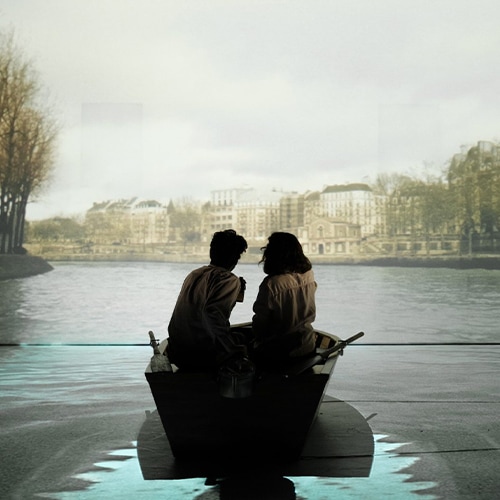Jean Paul Riopelle is a prominent figure in the artistic landscape of Quebec. His creative life spans the second half of the 20th century. His work contributed to the emergence of new art movements. His curiosity disregarded boundaries between disciplines, and he reinvented his techniques periodically. His process seemed to be guided by two fundamental drives: a powerful, constant creative urge and a recurring tendency to radically change sources of inspiration and artistic worlds.
Le Projet Riopelle follows three eras of the painter’s life and work.
1944 to 1960: These years include Riopelle’s first pictorial influences; his friendships with the future signatories of Le Refus global at the École du meuble de Montréal; his move to France and the relationships that he develops there with André Breton, Joan Miró and Samuel Beckett; his growing success; his pivotal meeting with Joan Mitchell; and his subsequent inroads into the artistic avant-garde of New York.
1960 to 1980: Mitchell and Riopelle’s fruitful and stormy relationship sets the stage for this period. Their creative visions nourish each other, their cultural references collide, and their passionate impulses lead to fusion as well as separation. Gradually, Riopelle’s return to Quebec takes shape, influenced by his emerging friendship with Champlain Charest.
1986 to 1993: Anchored at L’Isle-aux-Grues, in the heart of the St. Lawrence River, Riopelle has an increased interest in more or less representational depictions of the nature of Quebec. His new companion, Huguette Vachon, helps him in innumerable ways, all the more so as age forces the artist toward new creation techniques. These sometimes unprecedented approaches find their culmination in Tribute to Rosa Luxembourg, which celebrates the memory of Joan Mitchell, who died in 1992.
An Ex Machina production In co-production with the Jean Paul Riopelle Foundation, Duceppe, Le Diamant and the National Arts Centre French Theatre

The Development of Projet Riopelle, read the article ›
